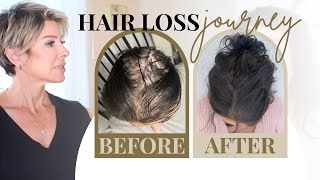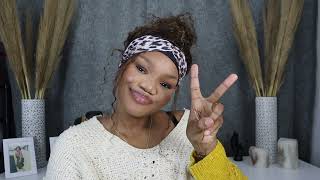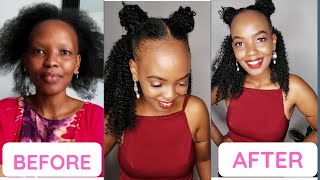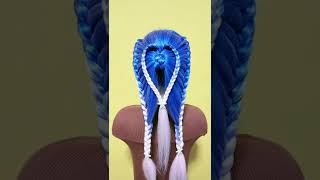Historical Hairstyles: From Victorian Times to Today
- Posted on 25 October, 2018
- Hot Topic
- By A. Rothstein
Victorian Historical Hairstyles
During the Victorian era, hairdressers became popular as women took interest in getting their hair styled professionally. Middle parts were all the rage as British fashion mirrored French styles. Women in this time took interest in adorning their hair with flowers rather than flashy trinkets. Some women in Victorian times often wore their hair long, down to the ground. Hairstyles were a reflection of a person’s station in life or class.
Upper class women rarely wore their hair down in public in the Victorian era, since a women’s hair was considered her most valuable asset. Because of this, bonnets and hats into outfits became common. Hair was also kept long, although regular trims were common.
Although there are photos of women freely sporting long, cascading waves, this particular hairstyle was considered wild and reserved for models and actresses. Most respectable women wore their hair in an intricately braided or twisted up do. Women would even add additional pieces of human hair, similar to modern day extensions, to give their hairstyle more volume and height.
The most important aspect of Victorian hair was neatness. Regardless of the style, hair had to be kept clean and shiny. The focus behind the hairstyles during this period was on the overall silhouette of the human body. In the Victorian era, hair was meant to be styled in a way that made the body appear balanced.
The Roaring ’20s Historical Hairstyles
The era of raging consumerism boosted the economy and the men and women of this period took major interest in various accessories. Hats, jewelry pins, bows and headbands were booming and evolving. As times changed, so did the common hair length–which had significantly shortened.
The fashionably chic, yet short bob is iconic for the 1920s. With this cut, all eyes were on the sparkling accessories used to adorn it. This cut transitioned easily into the following years when the Great Depression hit, as people couldn’t afford upkeep.
The short bob was, and still is, flattering for a wide range of face shapes due to its framing capabilities. It is also easy to style since short tresses require less effort, as proven by the popular finger waves of the ’30s.
1950s Historical Hairstyles
On the verge of Hollywood’s Golden Age, people in the ’50s followed trends set by Audrey Hepburn, Marilyn Monroe, Elvis Presley and James Dean. Hairstyles took on a more dramatic look to mirror the styles on screen. These included perfectly coiffed styles with a deep side part or side swept curls.
Apart from the sculpted, iconic Hollywood velvet curls that many starlets donned, the ’50s were all about volume. Whether backcombing hair or by using accessories, hair needed to stand tall. Updos were also popular, but not nearly as intricate as they have been historically. Tight, perfect curls (pin curls) is an iconic look of the time, which was achieved with the help of plastic hair rollers.
Salon hair care grew in popularity as political conflict came to an end, allowing for more time and resources. For men, hair was often teased and greased back for a bit of natural volume. This simple hairdo was paired with prominent sideburns.
1970s Historical Hairstyles
As the era of free love and hippy culture ended, the relaxed nature of the period transformed hairstyles. Although styles had varied by this point in time, most people embraced their natural textures. Women opted for longer hairstyles and men chose softer, more natural looking fringe cuts.
The style of this era sported soft layers and highlights that played off existing looks. When it came to hair accessories, women opted for practical scrunchies and large claw clips. This decade saw a dramatic decrease in the use of hair products since natural looks were in style.
As a result, many of the hair care products in the ’70s were sources from all-natural ingredients, such as plants and herbs, to match the demand of the era. African Americans in particular wore their natural hair in pride and celebrated the unique textures resulting from Afros as the practice of chemical relaxants died down.
1980s Historical Hairstyles
The practical, no frills styles of the previous decade quickly went out of fashion, as the ’80s set no constraints to expressionism. Bigger, shinier and brighter was better during these eccentric times. This idea stood true for both hairstyles and fashion.
The powerful career woman sported a long bob that exuded the idea of balance between work life and social life. Other women went with bigger, more texturized styles that required lots of product to maintain. Madonna is one of the most popular hair icons of this time.
Hair dye became more popular as celebrities wore bright and vivid colors. Styles also became choppy and uneven as styles became edgier. The role of hairdressers was necessary as these hairstyles required more care.
Hairstyles in Present Day
The styling of hair has become an increasingly complex art supplemented by the generations and decades of former experience. Society has also grown diverse and accepting of unique looks.
Beachy waves became popular in the early 2000s and have remained trendy. Straight and sleek styles also have become common. Layers continue to be a popular choice for hairstyles of all lengths, leading to a myriad of looks in demand in salons everywhere.
Overall, present day hairstyles seem to resemble a mix of fashionable cuts and textures of days past. With advancements in hairstyling tools and nourishing products, grooming and upkeep has become much easier. The market has a variety of hair products to help achieve any look.
When becoming a hairstylist, it’s important to know the history behind the profession. Hairstylists are the artists behind trending hairstyles that end up leaving such a prominent mark in history. It’s crucial to be aware of trends of the past and how they have helped and evolved into the hairstyles that are popular today.




